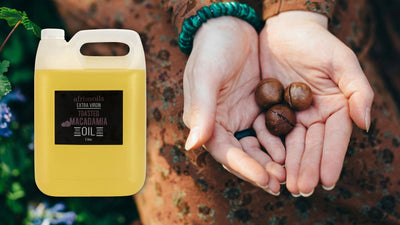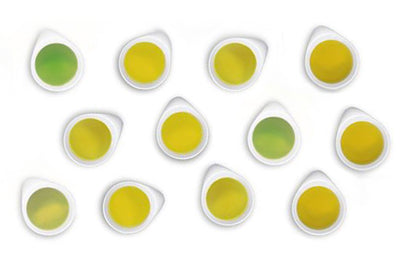
The color of olive oil is NOT an indicator of its quality or flavor. Color is determined by the ripeness of the olives at harvest; unripe, green olives create green-hued oil and ripe, purple-black olives produce golden-toned oil. Flavor is determined by several factors, including olive ripeness, type of olive (varietal), soil quality, climate, irrigation practices and milling techniques.
Olive oil that is green in color may indicate higher levels of polyphenols, the antioxidants associated with many of olive oil’s health benefits. This guides the consumer towards a preference for greener oil, yet the added benefits may not always be there. Some unscrupulous producers have been known to disguise their oil’s golden color by adding chlorophyll to it. Although the International Olive Council (IOC) does not allow additives in extra virgin quality oil, this fraudulent practice is unfortunately widespread and labeling regulations are rarely enforced.
With some exceptions, olive oils in the yellow/gold range tend to be mild and buttery while green oils tend to be robust and peppery.
Overall, there is a wide range of acceptable colors in genuine extra virgin olive oil, from yellow to golden to dark green, but consumers should avoid purchasing an oil that is so pale it has little color, an indication that it may be refined oil, or one that is copper-colored, which suggests oxidation from exposure to florescent lights.
Even the IOC’s own practices validate the fact that color should not be a factor in evaluating quality. It mandates the use of blue tasting glasses for organoleptic assessments because the dark glass obscures the oil’s color, which prevents tasters from judging oils based on appearance before they are tasted.






